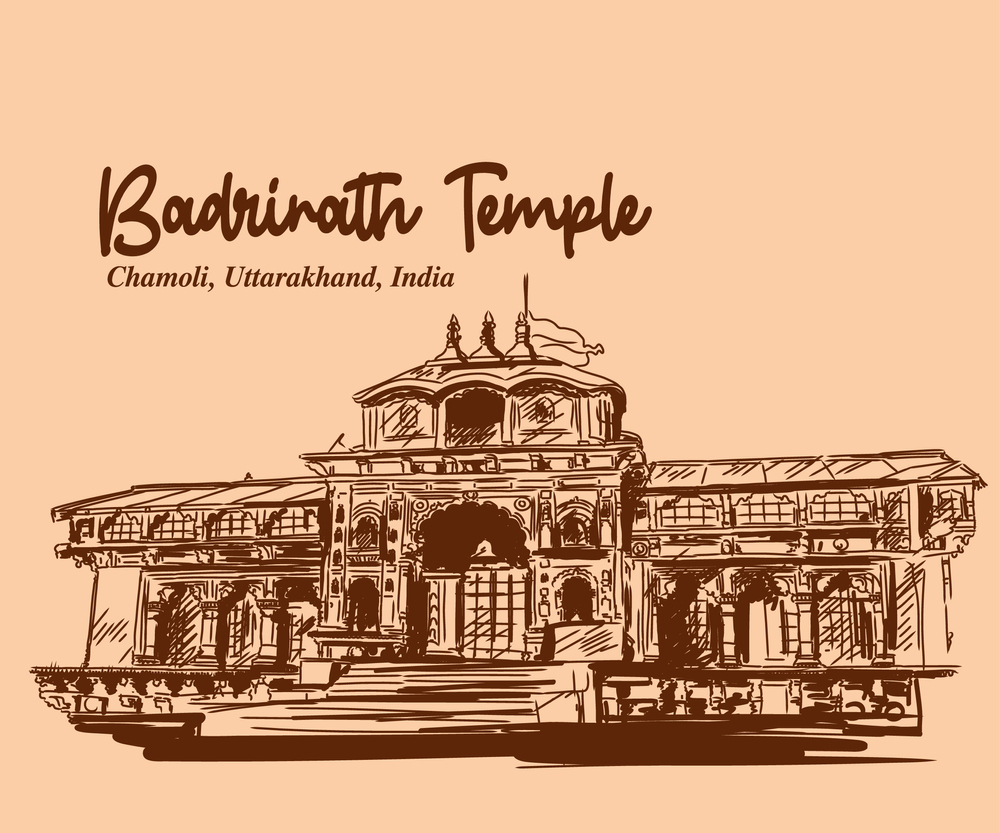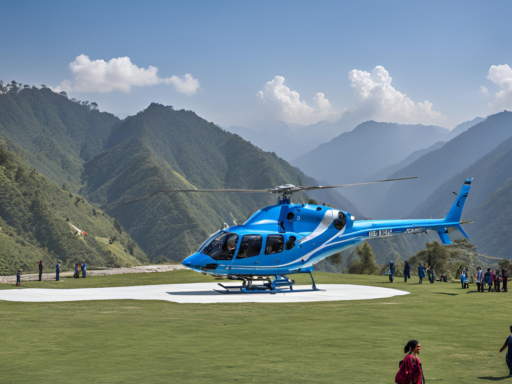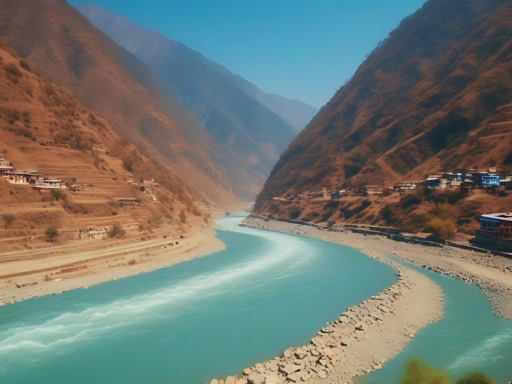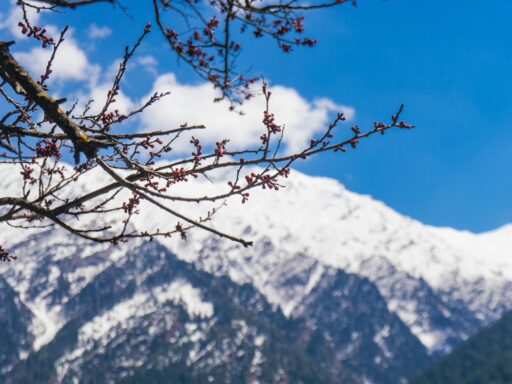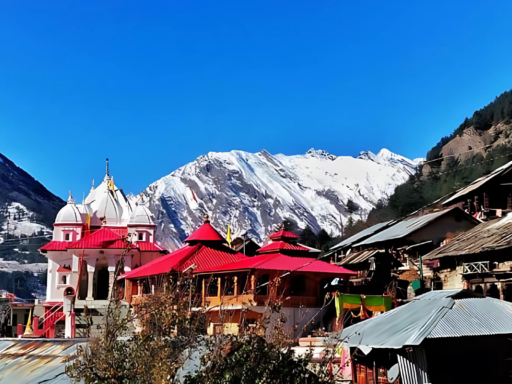Badrinath Temple history traces back to Uttarakhand’s Chamoli district, Established by Adi Shankaracharya in the 8th century, Located in Uttarakhand, this 50-foot temple attracts over 1 million pilgrims annually. Restored after the 1803 earthquake, it remains a key site in the Char Dham Yatra, despite its seasonal closures.
Located in Uttarakhand’s Chamoli District, Badrinath Temple (also known as Badrinarayan or Badri Vishal Chardham Temple) sits among the majestic Himalayas. Surrounded by the snow-capped peaks and the Alaknanda River, this sacred site is famous for its natural beauty and spiritual significance. Open from May to November, Badrinath Dham is a major destination for Hindu pilgrims, especially those on the Char Dham Yatra.
Key Facts about Badrinath Temple
Location: Chamoli District, Uttarakhand
Elevation: 3,300 meters (10,827 feet) above sea level
Opening Season: May to November
Part of Char Dham: Badrinath, Kedarnath, Yamunotri, Gangotri
Dedicated to: Lord Vishnu

Legends and Mythology of Badrinath
Lord Vishnu’s Meditation: According to Hindu mythology, Lord Vishnu meditated at Badrinath for thousands of years, enduring the harsh Himalayan weather. Goddess Lakshmi, his consort, turned into a berry tree (Badri) to provide him with shelter, giving the site its name, Badrinath.
Samudra Manthan: Another legend ties Badrinath to the great churning of the ocean (Samudra Manthan), where Lord Vishnu consumed poison to save the world. He then retreated to Badrinath to meditate and recover from the effects of the poison.
Pandavas’ Journey: In the epic Mahabharata, the Pandavas passed through Badrinath on their final journey to the Himalayas in search of salvation, adding to the temple’s significance as a place of spiritual pilgrimage.
Role of Adi Shankaracharya: In the 8th century, Adi Shankaracharya discovered the idol of Lord Badrinarayan in the Alaknanda River and enshrined it in the temple. His efforts are believed to have reestablished Badrinath as a major pilgrimage site.
Presence of Lord Shiva: Badrinath is also associated with Lord Shiva. It is said that Lord Shiva originally resided in the area, but when Vishnu chose it for meditation, Shiva moved to Kedarnath, another important pilgrimage site in Uttarakhand.
Badrinath Temple History & Background
Established: Believed to be around 500 BCE
Revival: Adi Shankaracharya revived the temple in the 8th century and is credited with establishing the black stone idol of Lord Badrinarayan in a cave near Tapta Kund.
Reconstruction: In the 17th century, the Garhwal kings moved the idol to its current location, and later restorations followed, including after damage from the 1803 earthquake.
Architecture of Badrinath Temple
Style: Traditional Garhwali style with stone and wood
Structure: The temple is about 50 feet tall with a gold-gilt roof.
Three Sections:
Garbha Griha (sanctum)
Darshan Mandap (for viewing)
Sabha Mandap (assembly hall)
Entrance: The main gate, called Singhdwar, is brightly painted and has an idol of Lord Vishnu’s vehicle, a bird named Garuda, at the entrance.
The origins of Badrinath temple are believed to date back to 500 BCE, though it gained prominence when Adi Shankaracharya revived it in the 8th century AD. He discovered the black stone idol of Lord Badrinarayan in the Alaknanda River and placed it in the temple, restoring its spiritual significance.
The temple stands at an elevation of 3,300 meters (10,827 feet) and is a central part of the Char Dham Yatra. Throughout history, Badrinath has been a beacon for pilgrims and a symbol of spiritual devotion. It suffered damage during the 1803 earthquake but was restored by the Jaipur King, and it continues to undergo maintenance to preserve its architectural grandeur.
The temple’s architectural style is traditional Garhwali, constructed with stone and wood, featuring vibrant colors and a gold-gilt roof. The temple is open for worship between April/May to November, with the idol being moved to the Narasimha Temple in Joshimath during the winter months. Its rich history and spiritual importance make it one of Hinduism’s most revered shrines.
Interesting Facts About Badrinath Temple
Badrinath is one of the 108 Divyadesams, mentioned in the Divya Prabandham.
The temple is open only six months a year, with the idol moved to Joshimath during winter, as per Skanda Purana.
Tapta Kund, a hot spring with healing properties, is scientifically proven due to geothermal activity.
Adi Shankaracharya revived the temple in the 8th century, as documented in Shankaravijaya.
The Mahabharata references Badrinath as part of the Pandavas’ pilgrimage.
The temple was rebuilt after the 1803 earthquake by the Jaipur King, noted in Garhwal historical texts.
The temple’s gold-plated roof was part of its historical restorations by local rulers.
The head priest, or Rawal, must be a Nambudiri Brahmin from Kerala, a tradition upheld for centuries
1. Part of 108 Divyadesams
Badrinath is one of the 108 Divyadesams, sacred shrines dedicated to Lord Vishnu. This classification comes from the Vaishnavite tradition, mentioned in sacred texts like the Divya Prabandham.
2. Seasonal Worship
The temple closes from November to April due to heavy snowfall. The idol of Lord Badrinarayan is ceremoniously moved to the Narasimha Temple in Joshimath during winter, ensuring continuous worship. This tradition is mentioned in the Skanda Purana and is followed even today.
3. Tapta Kund’s Healing Properties
The Tapta Kund, a natural hot spring, is believed to have healing powers. Pilgrims bathe in its waters before entering the temple. Geologically, this area is known for its geothermal activity, making it a scientifically proven natural hot spring.
4. Revival by Adi Shankaracharya
Adi Shankaracharya is credited with revitalizing Badrinath in the 8th century. His revival efforts are documented in the Shankaravijaya, a biography of his life. He reinstalled the idol of Lord Vishnu, which was believed to have been lost.
5. Pandavas’ Connection
According to the Mahabharata, the Pandavas visited Badrinath during their journey to the Himalayas. The ancient epic references this pilgrimage, adding to the temple’s mythological significance.
6. Reconstruction After the 1803 Earthquake
Historical records show that Badrinath Temple was severely damaged in the 1803 Garhwal earthquake. The restoration was funded by the Jaipur King, as noted in various historical texts, including local chronicles of the Garhwal region.
7. Gold-Plated Roof
The gold-plated roof of Badrinath Temple was installed during one of the temple’s restorations. This is mentioned in Garhwali historical records, where the contributions of various kings towards the temple’s upkeep are documented.
8. Unique Priest Tradition
The head priest, or Rawal, of Badrinath must always be a Nambudiri Brahmin from Kerala. This tradition is noted in ancient temple records and is strictly followed to this day, adding a unique cultural connection between North and South India.


